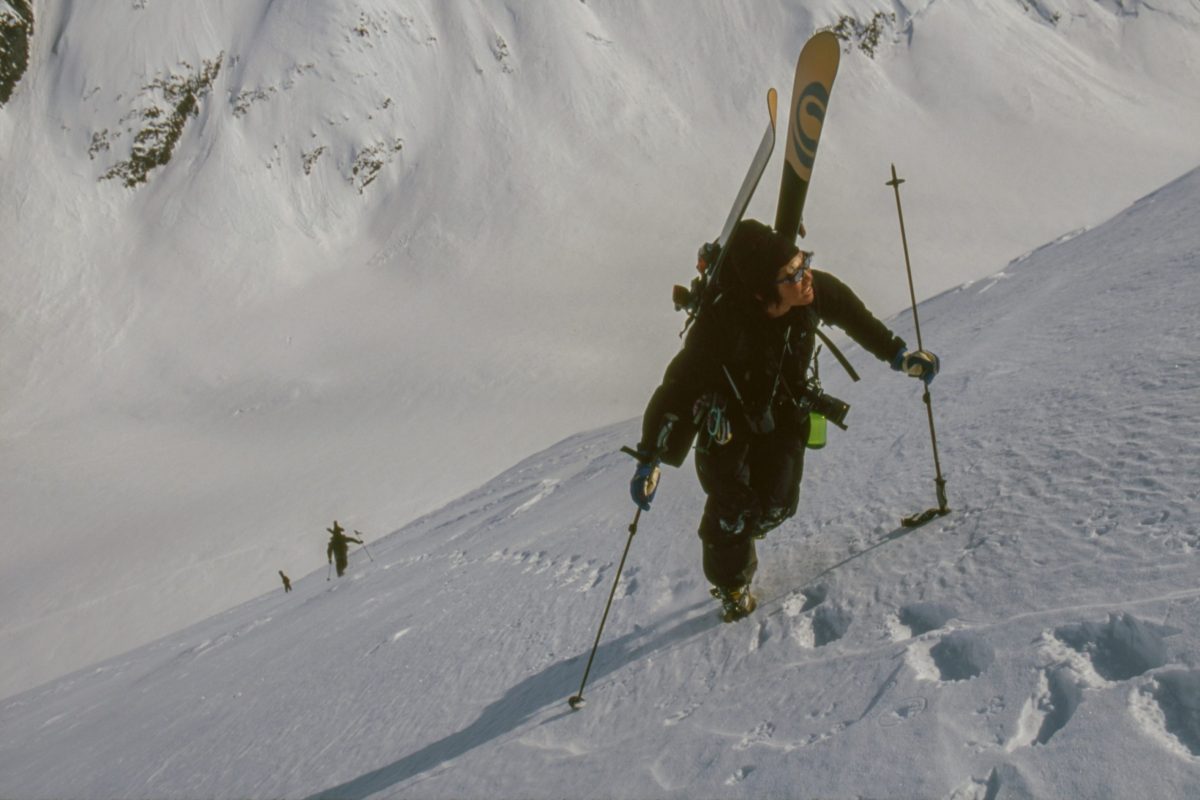2002 Skookum Glacier Photo: Yoshiro Higai
INDEX
- Why and how did Daisuke Sasaki aim to become an international mountain guide?
- Daisuke Sasaki who became an international mountain guide Reprinted from "2015 Fall Line vol.2"
- In search of ultimate self-sufficiency, I also dabbled in hunting
- What was Daisuke Sasaki's greatest moment?
Click here for " Part 1"
Why and how did Daisuke Sasaki
aim to become an international mountain guide?
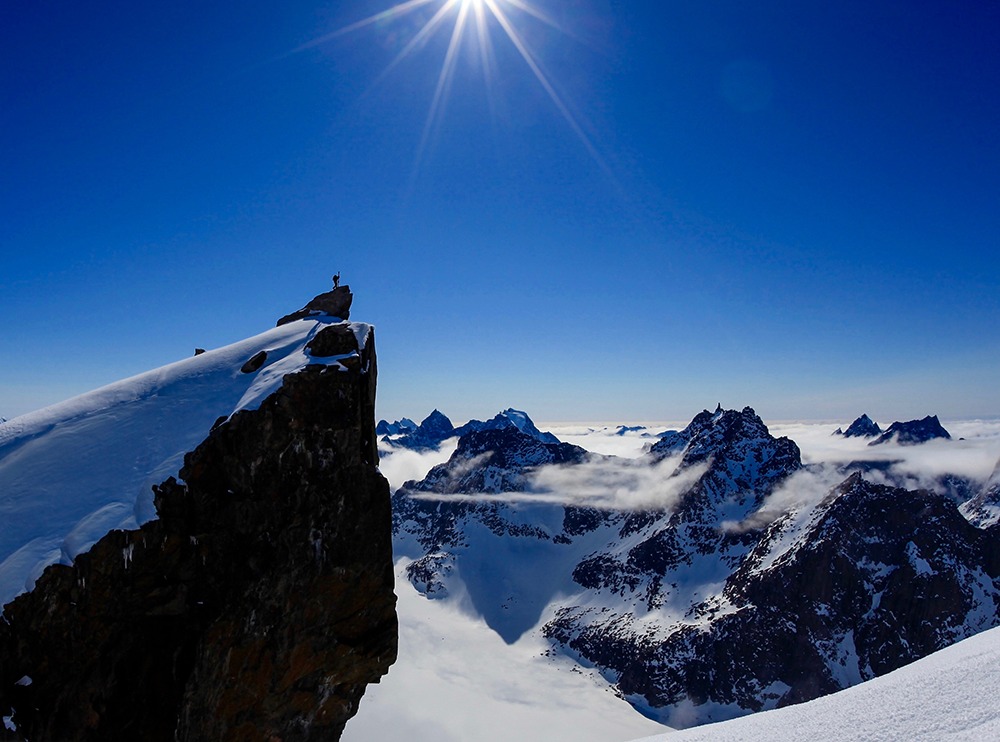
──You started challenging yourself to become an international mountain guide at the age of 31, and it took you six years to get it.
Well, I have to go to Europe many times because I need to learn glacier guiding, which is not available in Japan, take a certification, and also have local climbing and assistant guide experience. It takes time, doesn't it? However, as a Japanese person, it doesn't take that long.
──How many times did you travel to and from Europe to become an international mountain guide?
If it's just for certifications and exams, it's four times, but if you include the year I got injured, I've been there five times.
──What is an injury?
There are two times, one is the day when the exam is over. I went skating with my fellow guides, thinking, "The exams are over, so let's go skating together, yay!" it was done. I feel like I said "yes" too much.
The other was just before the exam started, I fell and broke my arm. So I skipped one season. After that, I had to work as an assistant guide in both summer and winter, so including that, I went to Europe for seven years.
──I heard that the crevasse fall was quite dangerous.
No, it was completely dangerous. In terms of height, it falls from a place higher than the telephone pole. I couldn't see the bottom, but the crevasses still stretched down from there. I fell with my skis on, but when I woke up, I had no poles, no skis, nothing. I think I was unconscious for maybe 10 to 20 minutes. When he got up, he was covered in blood and saw a hole in the top. It's about 2-3m wide. The ice on both sides was smooth and shiny, and for a moment I thought it was a little beautiful.
──Did you try to escape on your own?
At first, I had to escape on my own. Because I thought that the two friends who went skating together would also fall. But I hurt the base of my femur and can only move by dragging my leg. I tried to move after calming down for a while, but it still hurts and I can't climb, so what should I do! At that moment, rescue workers came down. I was the only one who fell, and a friend who saw it contacted the ski resort.
──By the way, did you have an ax and crampons?
No. On the contrary, neither harness nor helmet are pears. Well, I had a knife, so in the end I had to carve steps into the ice and climb up. But it was saved because the rescue team came earlier than that. If I had done that, I would have been more at the bottom.
──What about the other broken arm?
That year, I went to the European Alps about two weeks before the exam with a Japanese guide who was taking the exam together, and we were training together. During that climb my partner fell and broke his ankle and was rescued by helicopter. It was a multi-pitch route with 10 or so pitches. After that, I went to see him at the hospital, helped him pack his bags for his return home, and sent him off from the airport saying, "Goodbye, take care of yourself!"
At around 6:30 the next morning, I rushed out of the inn with my luggage to go to the exam venue, and when I slipped on the wet grassy slope, it snapped when I touched my hand. I should have gone down the stairs, but I couldn't take a shortcut. Even so, I went to the test site, but it was still painful and I couldn't climb, so I was the only one withdrawing from there. So I wasted a year.
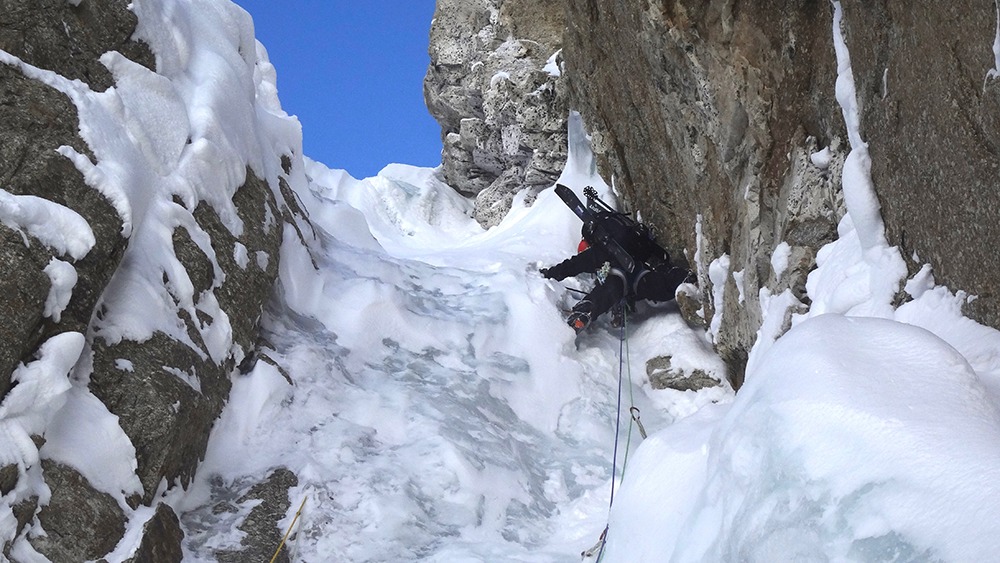
──Aside from skiing, how did you develop your climbing skills?
I don't think I did anything special. Now, as a guide, I should be able to climb about 5.10b with approach shoes, and about the latter half of 5.11 (*11) with climbing shoes. Guiding does not require such a high grade. Because that's not the point here. In addition, at that time, I had plenty of time, so I often went climbing Mt. Mizugaki (*12).
──What do you mean by saving money when you were young?
When I was 19 or 20, I went on a climbing trip to North America. His partner is Mugiya Suigo, a junior high school classmate and a member of Shindai's mountain club. Two years in a row I went on a trip with him for about two months in the fall. Exactly one month each of free and big wall. At that stage, I was able to climb up to 5.12. Savings at that time.
──Where did you climb the big wall?
One L-cap nose and one shield (*13). It was fun, vertical world. I also went to Hodaka Byobuiwa East Wall and Maruyama East Wall for Big Wall training.
──That was around the time you were training to ski at the Dolphins, right?
Well, yes. After all, I admired the world of climbing, and the fact that I was able to do both skiing and mountain climbing was something very rare among Japanese people. .
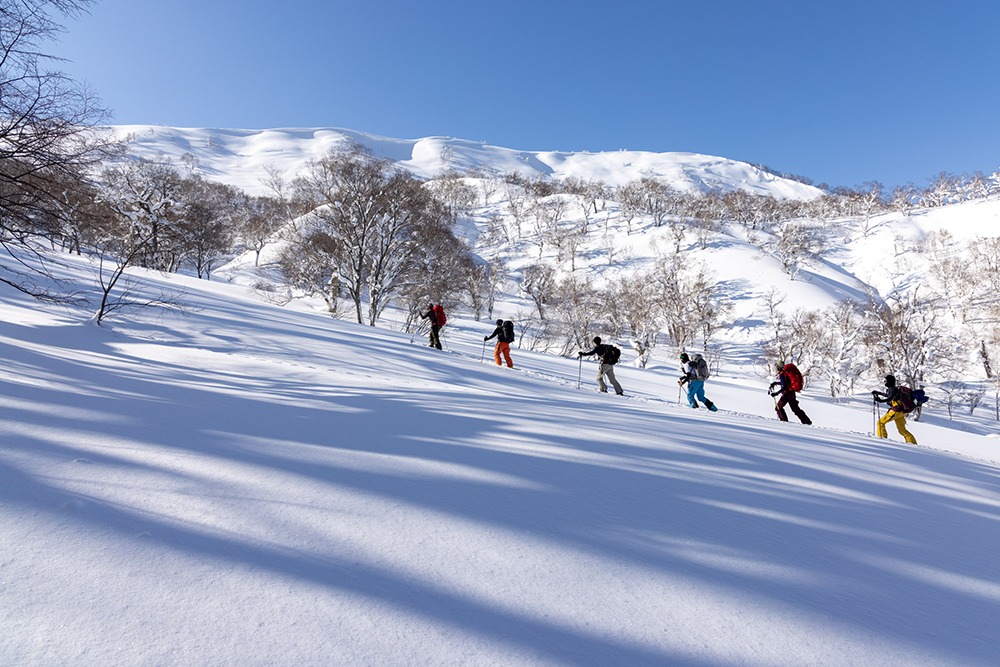
──When you decided to become a guide, were you aiming to become an international mountain guide from the beginning?
No, at first I just admired Mr. Miyashita. However, by the time I joined Nomad, I feel that Mr. Miyashita was already an international mountain guide. To be “international,” you have to be able to climb mountains and ski. So I thought I was pretty close. At that time, I don't think there were many Japanese guides who were good at both.
──Certainly.
Another reason is that I can guide the world that I have enjoyed. After all, it's there, isn't it? After all, it was inevitable because we had our bases all over the world. I want everyone to enjoy the snowy mountains of the world that I have enjoyed. That is the most important base for a guide, so I thought that an international qualification was absolutely necessary for that.
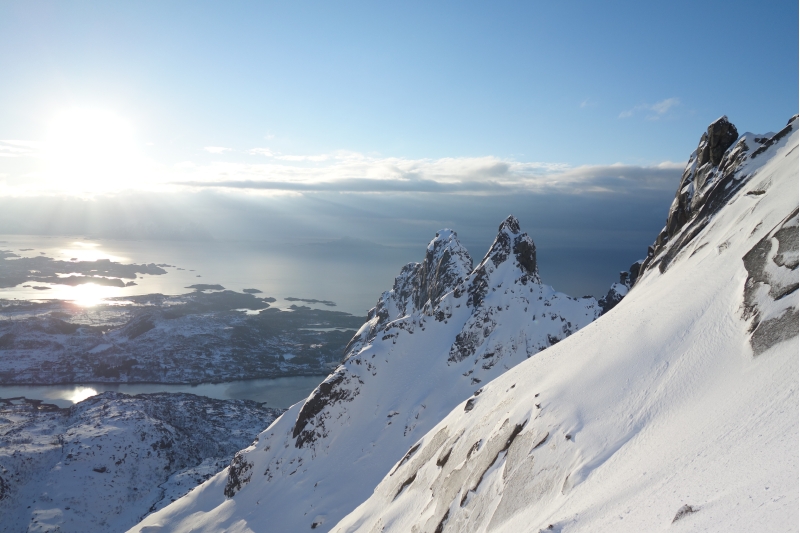
*11 [About 5.10b for approach shoes, late 5.11 for climbing shoes]
The grade of route climbing is expressed as "5.@@", and supplemented with "a to d" and "+/-". Beginners can climb about 5.6 to 5.8 on that day, and 5.9 when they get used to it. Going to a climbing gym and being able to climb 5.10, 5.11 requires continuous training and a certain amount of effort. Bouldering has another grade
*12 [Mt. Mizugaki]
Located in the northern part of Yamanashi Prefecture, near the border with Nagano Prefecture, it is one of the leading granite free climbing areas in Japan, along with Mt. Ogawa. Compared to Mt. Ogawa, which can be enjoyed by beginners to experts alike, it has many difficult multi-pitch routes with high-grade pitches, and continues to be loved by serious climbers.
*13 [Elcap nose and shield]
El Capitan, located in Yosemite National Park, California, is the world's largest granite monolith with an elevation difference of 900m. 'The Nose' is a first ascent route with more than 30 pitches and usually takes 3-4 days to complete. Compared to Nose, there are fewer climbers on Shield, making it a more difficult big-wall climb.
Reprinted from "2015 Fall Line vol.2" by Daisuke Sasaki who became an international mountain guide
In July of this year, Daisuke Sasaki became an international mountain guide certified by the International Mountain Guides Association (IFMGA). As a mountain guide, he acquired a domestic qualification in his twenties, but to guide major mountain areas overseas, this world-wide mountain guide qualification is required. I would like to finish my activities as a skier in my 20s and continue my high-quality activities as a mountain guide in my 30s. For Sasaki, who thought so, obtaining this international mountain guide qualification was an important milestone.
What Sasaki was particular about was not just the professional aspect of being able to guide in overseas mountains. So far, the members of Namara Habit-X have repeatedly traveled to various parts of the world, including the Kuril Islands, Greenland, and Patagonia. (8,163m) from 7,400m, Alaska's McKinley (6,190m), and China's Mustaguata (7,546m) from 6,900m.
However, from the point of view of international mountain guides I met on overseas mountains, Sasaki was just another climber from Japan. Sasaki, who wants to continue his activities in the mountains of the world, wanted to communicate with them on an equal footing. He has no choice but to rise to the same standing position. It is said that such thought was earnest.
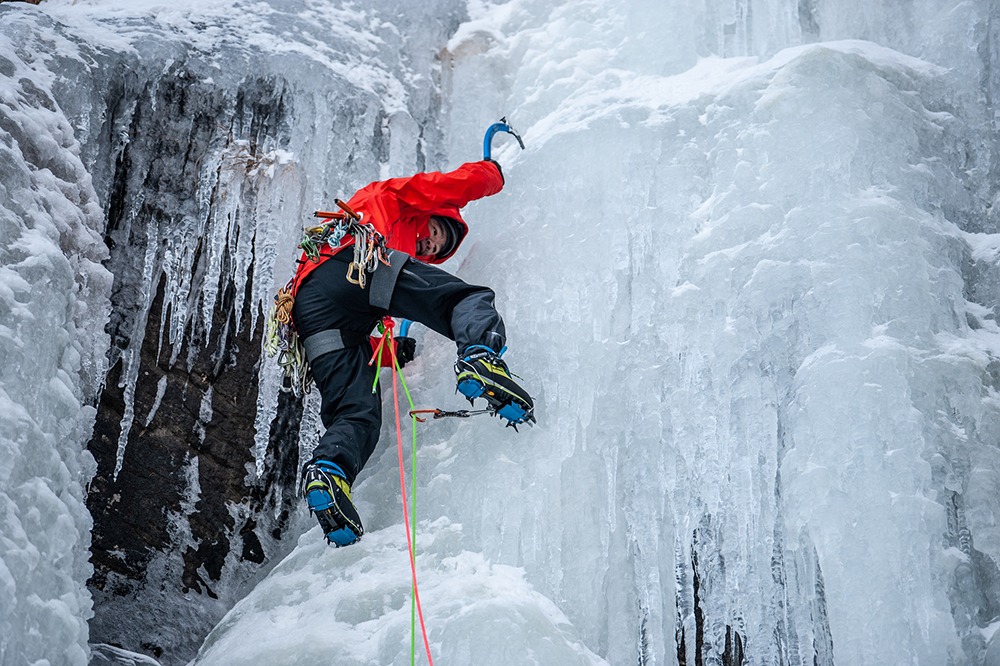
It was in 2008 that Sasaki specifically started aiming to become an international mountain guide. It was the year when the filming of the documentary film "END OF THE LINE", which was the culmination of his career as a skier, had entered its second season. Sasaki, who finished filming the season and went to France in the spring, took a glacier training course in Chamonix.
What you need to acquire an international mountain guide qualification that is not a Japanese mountain guide qualification. That is the skill on the glacier. An essential technique when guiding the world's mountains that are often approached from glaciers. However, the only way to master it is to study hard in the European Alps where there are glaciers. In this way, the glacier training in the Alps will be repeated over the next four seasons.
This glacier training was a big bottleneck for Japanese mountain guides. The training itself lasted for two weeks, but it was necessary to arrive at the site at least two weeks before and acclimatize the body to the mountain environment. Therefore, the length of stay is usually one month. In addition to the fact that it was a technique that could not be practiced in Japan, the repeated travel and living expenses were a considerable burden.
In order to become an international mountain guide from Japan, it is necessary to take two steps. First of all, it is necessary to complete the prescribed glacier training and fulfill the strict quota of actual climbing achievements set by the International Mountain Guide Federation. His climbing achievements are 10 or more in winter in Japan, 6 or more overseas rock wall climbs, and 20 or more ski tours of 8 hours or more.
After completing this, you will be certified as an International Aspirant Guide. It is like an intern before becoming a regular guide. From here, I will accumulate more than 20 days of overseas experience as an aspiran guide and more than 20 days of glacier training.
It is an extremely long road to meet these requirements and qualify for the official guide examination for the first time.
During this time, Sasaki continued climbing both in Japan and overseas, and in 2009, went to Antarctica as a field assistant for the Antarctic expedition. He also narrowly escaped death by falling into a crevasse after finishing glacier training, and broke his hand in the city just before the test and shook the season. After spending six years in this way, I finally acquired an international mountain guide qualification.
By the way, the current system, in other words, the requirement for practical experience equivalent to that of international mountain guide federations, was only recently introduced, and Sasaki was one of the first to obtain it.
As a matter of fact, it is questionable whether or not the investment up to this point can be recouped in the work spread by the “international qualifications” obtained by spending so much time and money. But for Sasaki, it was a trivial matter. Influenced by Naomi Uemura, he set his sights on mountains in his teens, and has since traveled to mountains around the world. The curiosity of wanting to know the wide world, and the exhilaration and splendor of enjoying the greatness of nature. My job from now on is to convey that to people through guiding. Because that is Sasaki's motivation.
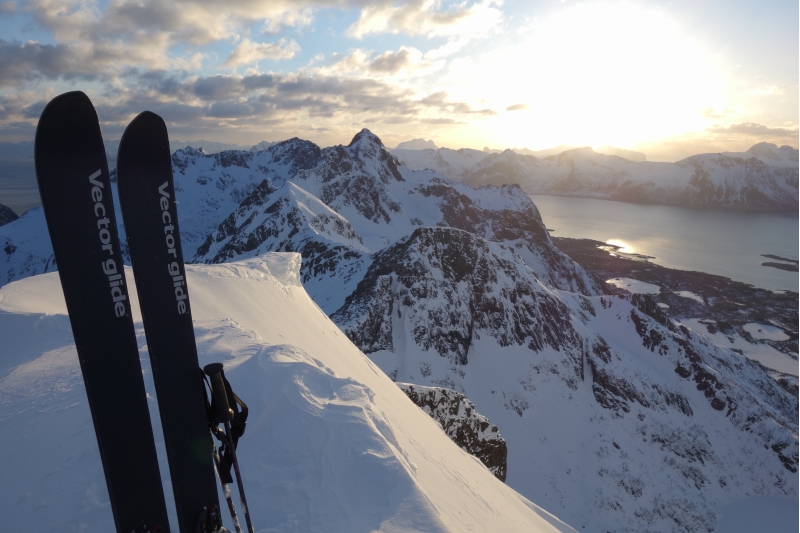
In search of ultimate self-sufficiency,
he also started hunting
──It seems that you recently got a hunting rifle license and are addicted to hunting?
I've always been interested in reading books by CW Nicole and Michio Hoshino. When I was younger, I admired Ainu culture and made bows and arrows. It was only after I started reading the books of Bunsho Hattori (*14) that I remembered that specifically. I felt like I was being invited somehow.
──When did you get your hunting license?
Last year. I've been thinking about it for two or three years, but I was too busy to make a schedule. It became corona and this is it! What? Every year there are exams 2 or 3 times a year, but last year it was only once, but even so, the timing was good and I passed.
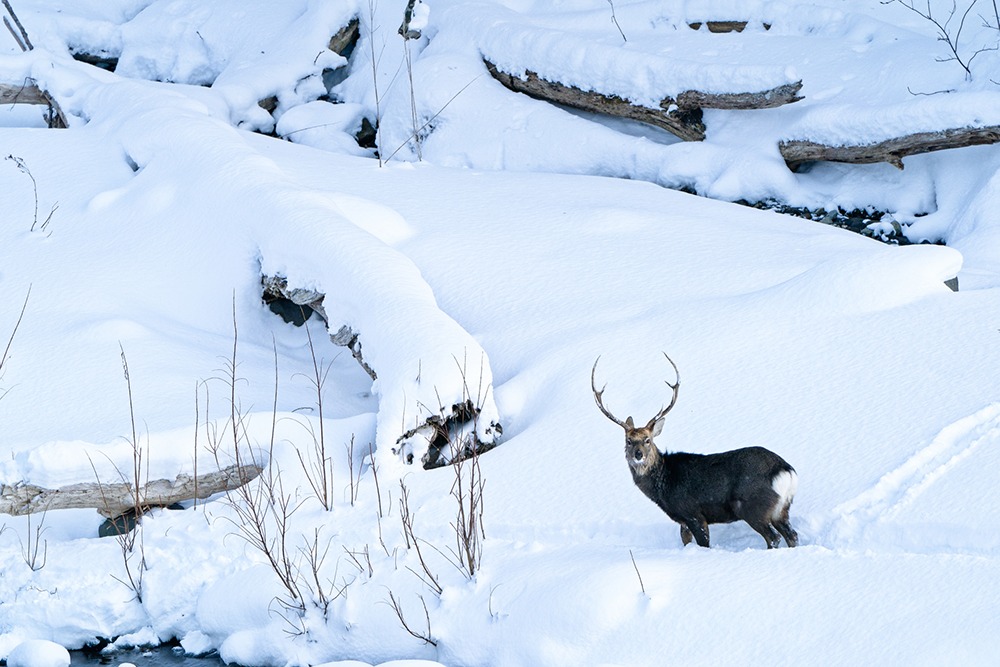
──So you actually went hunting?
Yezo deer come out behind my house. I've noticed footprints recently, and they say they can be caught near my house. In Hokkaido, the ban on hunting will be lifted from October 1st, but it was around November that the preparations were made. Cut to ... .... When I went to see it every day like that, it was there.
First came the fawn. I have to shoot this. The second time was a parent and child, and when I thought I was going to shoot this time, I couldn't shoot because my heart was pounding and my breathing was too rough. The third time, there was a fine stag, and when I shot it, it ran away. After that, he didn't come for about two weeks, but he went to see it every day, so he came out where he was aiming and shot.
── Haha.
Well, it was quite difficult to dismantle it. I dragged a 100kg sika deer about 100m to a parked light truck, put it on the bed, brought it home, hung it in the garage and dismantled it. The children also came to see it, but surprisingly they didn't hate it, so I'm glad.
──Ah, I wonder if I finally went to that side.
It is the ultimate form of self-sufficiency that I dreamed of since I was a child.
──How much does it cost to dismantle one animal?
The amount of meat is amazing, so I gave it to various people and quickly bought a refrigerator that could hold three animals.
──Did you like the venison you caught?
It was delicious. It seems that the blood was removed fairly well, and even people who are accustomed to eating deer said it was delicious. I think it worked.
──You grow vegetables in your kitchen garden in the summer, right?
I agree. That is the wife's role. I'm not quite there yet, but I'll be able to manage without buying vegetables if I want to.
──Did you go fishing?
I only fished when I was really hungry. I hate catch and release phishing. If you try to make it a fish, sometimes the food will flow out, right? Be careful, I thought it was fake, but this is! If you think about it and eat it, you will be able to catch it.
So, I desperately ran away to survive, but in the end I was pulled up to the shore and said, "Oh, it's over. I tried my best, but I'm going to die." They would take pictures of me when I was exhausted, and then let me go and say, "That was great, let's play again if we have the chance." Anyway, I guess it's fine because it saves lives, but I don't like that kind of thing.
──That's true (laughs).
Well, if you say it, hunting is also one of the preparations. Since I might not be able to work as a guide due to the coronavirus, I was making preparations. When I'm out of work, I'm thinking about doing some snow removal work, hunting deer to secure a source of protein in the summer, and a chain saw for the winter, with a heater on the grip so my hands don't freeze. ─ I also bought it in the fall. to make a reserve.
── Self-sufficient posture assuming that you can not work in Corona.
After all, the summer guide work was almost cancelled. It's the same with actions in nature, but when you can't do it, you can't do it. When such an unknown threat strikes, I don't overdo it and stay still. I know it's difficult, but if you can endure it, I think you should endure it.
*14 [Mr. Bunsho Hattori]
You know "survival mountaineer". He is known for his climbing style of entering mountains with minimal equipment and basically procuring food locally, but as a result of this escalation, more and more books have been published on the theme of hunting.
Daisuke Sasaki's
greatest moment yet?
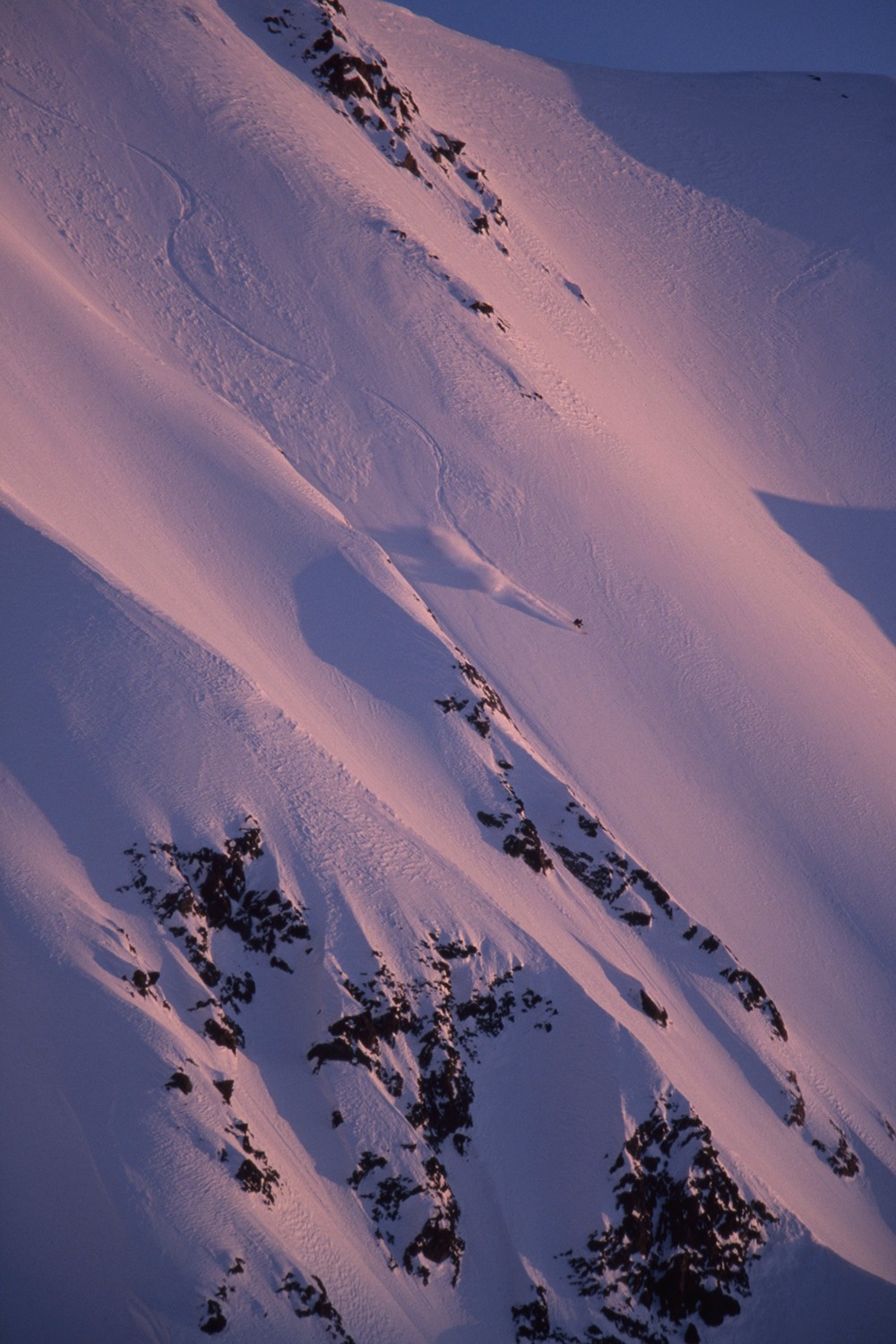
──If you count from the age of 20 when you participated in WESC for the first time and came in 8th place, this year will be your 25th year of activity. What was the most memorable event in your life?
One is a crevasse fall that almost killed him. For me, that was the most dangerous event. The best moment was when I went onsite (*16) a crack that was 5.12 minus at Indian Creek (*15). It was then that my soul trembled from the bottom of my heart.
──Isn't it skiing?
In skiing... um, where is it? It's probably the one in Alaska (*17) that was the last scene of "END OF THE LINE". That might be one of my culminations.
The run on the ridge that I skied before that was also good. I was able to confidently enter the line at high speed, knowing that if the snow was even a little hard and it would bounce off, it would be over. I was sharp, I was able to ride, I was in the zone... It's scary when I think about it now.
──I watched "END OF THE LINE" again the other day, and it's not bad. How was it for you personally?
Well, there were parts where I wondered if I could do a little more, but there were also parts where I could only do this much in three years. However, I had plans to go to Antarctica after that, so I decided to switch from being a professional skier to being a guide. I was able to show my best there, and I think it was a good opportunity for me. I was grateful.
──When I interviewed Yuta Shimomura for this "STEEP", I admired Daisuke Sasaki after watching "END OF THE LINE"." When I heard that, I was deeply moved that we were connected.
When I go to college student training, there are students in the mountain ski club who say, "I started watching Rishiridake downhill on NHK." I've never seen a young person say, "I started watching Denali downhill," but I wonder if it's good or bad.
──That kind of flow, I think there is definitely a ripple effect.
The other day, when I was skating at Sapporo Kokusai, there were some college students who were attacking in a good way. When I saw it, I thought, oh, there must be someone who skis like this. There is our generation, and there is the generation of the next Taisuke (Taisuke Kusunoki) and others, and of course there is a generation that we look up to and are influenced by. Even Taisuke and the others aren't necessarily watching our backs, but they're still skiing down the mountain and attacking the powder. There will be a generation that admires that, and I think that kind of trend is really good.
──Is it inherited, or is it connected?
I happened to be with those college students on the gondola. I think he was a university student somewhere in Sapporo, and he said, "Oh no, classes are starting," and started participating in online classes in the gondola. In the gondola, you can hear the contents of the class. I guess that's why I'll be attending. So, when I got off the gondola, I slipped away. While saying "Yeah!" There are still more people like this (laughs).
──That's kind of a good story (laughs). So how do you balance climbing and skating in yourself? At Denali, for example, both climbing and skiing accomplish something worthwhile.
Hmmm, I think it's fun to take on new challenges and use all your abilities. So even though I'm a guide now, I'm happy to feel that my level of knowledge and judgment is higher than last year. In that case, I wonder if I could be a good guide for different fields and environments every day, and for different customers. It's fun for me to feel myself grow more and more in it.
It's not only sliding, but also including climbing. That kind of training was also useful in hunting. I was able to capture the deer's movements, behaviors, modifications, and locations by applying what I have learned from activities in nature. That made me happy. There is only one truth in nature.
──When was the best guiding you ever did?
I don't remember much about it, but what do you think? I've been to Lofoten in Norway twice so far, but this may be my first Lofoten. I believe that the best thing I can do is to provide good guidance in a place I have never been to before.
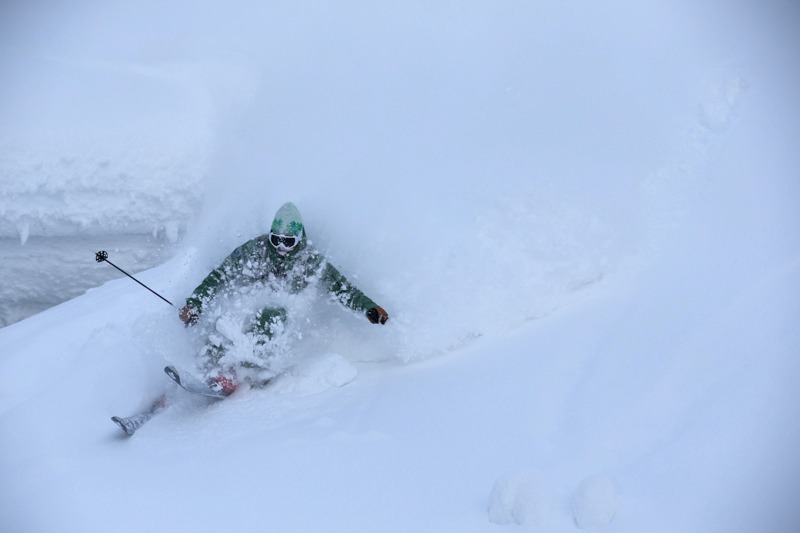
──What is the best powder ever?
This season, isn't it? It may have happened before, but I can't remember for a while. That said, this year was definitely better. It slides normally and overhead. We often hear from customers that they can't ski because they can't see in front of them. The low temperature has continued for a long time this year, so it's working.
──Why do you never get tired of skating on this great snow every year?
Hmm, I guess it's because there's nothing more to play for me. The fun of being able to play freely on the natural terrain. There is no other.
*15 [Indian Creek]
A famous climbing area in Utah. It is also known as the "Sacred Land of Cracks" because of its characteristic cracks that stretch out from the red sandstone.
*16 [Onsite]
A climbing term that means the highest evaluation among various ways of climbing. To get to the route at first sight without a trial climb and complete the climb as it is. If you hang on the rope and rest on the way, or fall and climb back up, the evaluation will drop by one rank and it will be called a "red point".
[Editor + Writer]
Chikara Terakura
After working for the Miura Dolphins led by Yuichiro Miura for 10 years, he has been involved in moguls and freeskiing for nearly 30 years as a member of the BRAVOSKI editorial staff. Currently, he is working on "Fall Line" as the editor-in-chief, and is active in various media as a freelancer. He has been writing interviews for over 10 years in the mountaineering magazine PEAKS.

